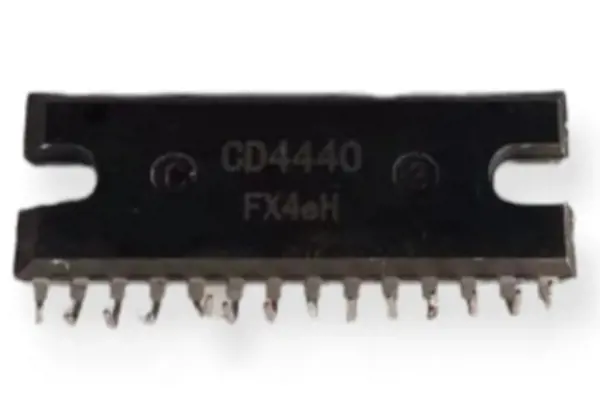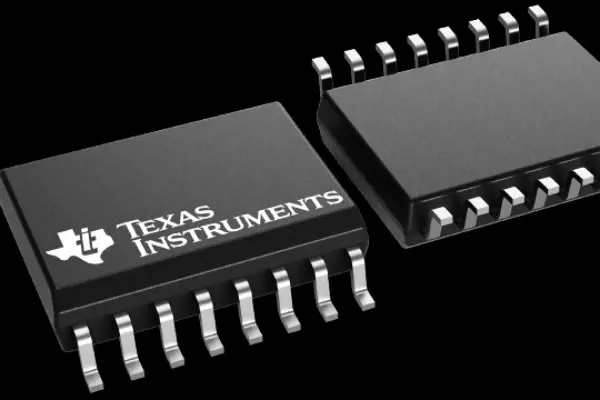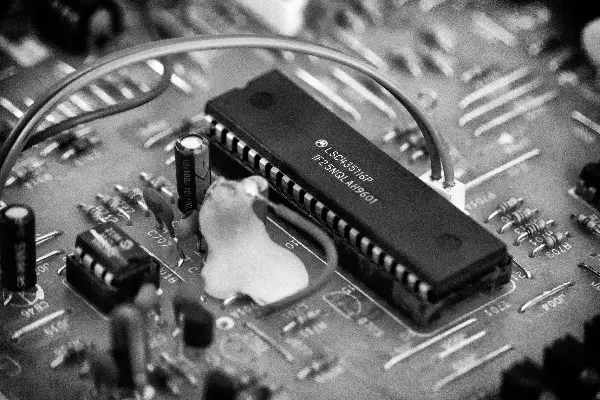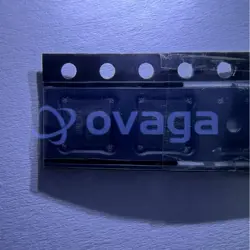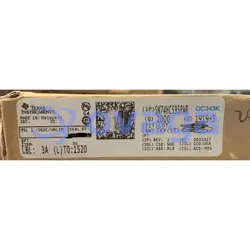Advantages and Disadvantages of Operational Amplifier (Op-amp)
Update Time: Oct 05, 2023 Readership: 5233
Contents
In the world of analog electronics, an operational amplifier, or op amp for short, is considered a vital and versatile component. Op amps can easily create high-performance amplifiers by adding a few other components, which gives them a special place in electronic engineering.
However, op amps are used for more than just amplifiers. It can also build a variety of other circuits, from filters, timers, oscillators, to comparators, astables, and more. Therefore, it can be said that op amps are the Swiss Army Knife of analog engineers and electronics enthusiasts, and are the universal building blocks for building various electronic circuits.
Fortunately, the basics of op amps are relatively simple, and many circuit designs are relatively easy to get started with. This enables both beginners and professional engineers to quickly understand and apply it, making it easier to implement a variety of electronic designs and projects.
What is an Operational Amplifier
An operational amplifier (op amp) is a circuit unit with high amplification. In actual circuits, it is often used in combination with feedback networks to build specific functional modules. It is an amplifier with a special coupling circuit and feedback mechanism. The output signal of the op amp can be the result of mathematical operations such as addition, subtraction, differentiation, and integration of the input signal. It is named after its early use in analog computers to perform mathematical operations.
The name of the op amp reflects its function, which allows it to perform a variety of mathematical operations, including addition, subtraction, differentiation, and integration. It was early used in analog computers, hence the name "operational amplifier".
Op amps can be implemented as discrete devices or integrated into semiconductor chips. With the continuous development of semiconductor technology, most op amps now exist in the form of single chips. They come in many varieties and are widely used in various applications in the field of electronic engineering. Whether as a basic component or a key component in complex circuits, op amps play an important role in the electronics industry.
Operational Amplifier Example: AD797 Integrated Circuits
Op Amp Advantages
Operational amplifiers, or op-amps, offer a host of significant advantages. Their high level of integration condenses multiple functions into a single IC package, simplifying circuit design and reducing the need for numerous discrete components. Op-amps excel in precision, providing accuracy and reliability in signal processing, making them invaluable for applications demanding minimal distortion and noise. Op-amps are not only technically advantageous but also cost-effective, eliminating the necessity to procure individual discrete components for each function they perform.
-
Availability and Variety: Operational amplifiers, often in the form of ICs (Integrated Circuits), are widely available in the market. They come in numerous selectable performance levels to suit various application requirements.
-
Versatility: Op amps find extensive use across a wide range of applications. They serve as fundamental building blocks in many analog circuits, including filters, voltage buffers, comparators, and more.
-
Simulation Support: Many companies provide simulation support, including PSPICE models, allowing designers to validate their operational amplifier designs through simulations before implementing real-world circuits.
-
Simplified Design: Operational amplifiers come in a package with all the necessary technical characteristics listed in datasheets, making them easy to use without delving into the internal circuitry.
-
Ease of Replacement: If the packaged operational amplifier is damaged, it can be easily replaced with another one without the need to troubleshoot the internal circuit.
-
Compact Size: Operational amplifier packages are space-efficient, which is advantageous in a tech world where performance is demanded in smaller gadgets.
-
Cost-Effective: Packaged operational amplifiers are cost-effective, eliminating the need to purchase individual components to build one from scratch.
Disadvantages of Operational Amplifier
While operational amplifiers (op-amps) offer numerous advantages, they come with certain limitations. One notable drawback is their power supply requirement, necessitating symmetrical power supplies with equal positive and negative voltages. Additionally, op-amps are ill-suited for high-frequency applications due to their limited bandwidth and phase response. Moreover, when operating op-amps at high voltages, careful safety measures must be implemented to mitigate electrical hazards, introducing complexity to the design process.
-
Analog Nature: Operational amplifiers are analog circuits, which means they deal with continuous voltage signals. Designers working with op amps need a solid understanding of analog fundamentals, including concepts like loading, frequency response, and stability.
-
Complexity: Designing op amp circuits can be deceptively complex. Seemingly simple designs may exhibit unexpected behavior when powered on, such as oscillations. Designers must comprehend how key parameters influence their designs, requiring a moderate to high level of analog design experience.
-
Symmetrical Power Supply: Operational amplifiers require a symmetrical power supply with equal positive and negative voltages, which can be a limitation in some applications.
-
Limited High-Frequency Response: They are not suitable for high-frequency applications as their response differs from that at low frequencies.
-
Not for Medium and High Powers: Operational amplifiers are not suitable for medium and high-power applications.
-
Safety Concerns at High Voltages: When designing circuits operating above a certain voltage (e.g., 60V), safety issues and standards become crucial. Implementing safety measures, such as barriers, interlocks, or isolation, is necessary to separate high and low voltages effectively.
Conclusion:
|
Advantages of Operational Amplifiers |
Disadvantages of Operational Amplifiers |
|
High level of integration, simplifying circuit design and reducing component count |
Requirement of symmetrical power supplies with equal positive and negative voltages |
|
Precision in signal processing, ensuring accuracy and reliability in various applications |
Limited suitability for high-frequency applications due to bandwidth and phase response |
|
User-friendly with readily available datasheets for easy accessibility |
Not designed for medium to high-power applications |
|
Cost-effectiveness, eliminating the need to purchase individual components |
Safety concerns and complexity when operating at high voltages |
|
Widely available with various selectable performance levels |
Analog nature, requiring understanding of analog fundamentals |
|
Versatility in applications, serving as building blocks for various analog circuits |
Complexity in design, with unexpected behavior in some cases |
|
Simulation support, including PSPICE models, for design validation |
- |
|
Compact size, space-efficient for modern gadget demands |
- |
How Many Types of Op Amps are There
-
Dual Supply Op-Amps
These op-amps operate with dual power supplies, typically a positive voltage (V+) and a negative voltage (V-). They have an input and output voltage range that extends from the negative supply voltage (V-) to the positive supply voltage (V+). In other words, their input and output can swing across the entire supply voltage range.
-
Single Supply Op-Amps
Single supply op-amps operate with a single positive power supply voltage (V+), and their input and output voltage range typically span from the ground (0V) to the positive supply voltage (V+). They are commonly used in battery-powered or low-voltage applications.
-
Rail-to-Rail Op-Amps
Rail-to-rail op-amps are a subset of single supply op-amps. They are designed to work with a single positive supply voltage (V+) and provide the advantage of having input and output voltage ranges that can reach very close to both the ground (0V) and the positive supply voltage (V+). In other words, they can "swing" their output voltage very close to the supply rails, hence the name "rail-to-rail."
How to Use an Operational Amplifier
How Does an Operational Amplifier Work
An operational amplifier (op-amp) is an integrated circuit that serves as a versatile building block in electronic circuits, primarily used for amplifying and processing voltage signals. In summary, an operational amplifier works by amplifying the voltage difference between its two input pins, with the ability to provide high levels of gain while maintaining a virtual short-circuit between the inputs. Here's how an op-amp works:
-
Input Pins: An op-amp typically has two input pins: the inverting (-) input and the non-inverting (+) input. These pins are labeled as such because of their respective functions in signal processing.
-
Power Supply: The op-amp requires a power supply voltage, typically a positive supply voltage (V+) and, in some cases, a negative supply voltage (V-) for dual supply configurations. These power supplies provide the necessary voltage levels for the op-amp to operate.
-
Amplification: The primary function of an op-amp is to amplify the voltage difference between its two input pins. This amplification factor is very high, often in the range of tens of thousands to hundreds of thousands. The op-amp multiplies the voltage difference between the inverting and non-inverting inputs by this amplification factor and produces an output voltage.
-
Output Pin: The amplified output voltage is available at the op-amp's output pin. The output voltage can swing in response to changes in the input voltage, but it is also influenced by the configuration of the feedback network connected to the op-amp.
-
Feedback: Op-amps often operate in a closed-loop configuration, where a portion of the output voltage is fed back to the inverting (-) input through external components such as resistors or capacitors. This feedback network helps control the gain (amplification) of the op-amp and shapes its overall behavior. Common feedback configurations include inverting amplifiers, non-inverting amplifiers, and integrators.
-
Virtual Short-Circuit: One of the key principles of op-amp operation is the concept of a "virtual short-circuit" between the inverting and non-inverting inputs. This means that under normal operating conditions, the voltage at the inverting input is very close to the voltage at the non-inverting input. The op-amp strives to maintain this equality, and any difference in voltage between the inputs (known as the input differential voltage) is amplified and appears at the output.
-
Common-Mode Rejection: Op-amps are designed to amplify the differential voltage between their inputs while rejecting or attenuating any common-mode voltage (voltage that is present on both inputs). This feature is essential for eliminating noise and interference in many applications.
-
Linear Operation: In the linear operating range, op-amps behave as ideal amplifiers with predictable and well-defined characteristics. However, op-amps have limitations, such as maximum output voltage swing, bandwidth, and slew rate, which must be considered in circuit design.
Beliebte Blogs
-
![CD4440 IC: Datasheet, Amplifier Circuit Diagram, Pinout]()
CD4440 IC: Datasheet...
The CD4440 IC is a stereo audio power amplifier ...
-
![Small Outline Package (SOP): Definition, Applications and Advantages]()
Small Outline Packag...
SOP (Small Outline Package) is a type of integra...
-
![Advantages and Disadvantages of Operational Amplifier (Op-amp)]()
Advantages and Disad...
Operational amplifiers, or op-amps, offer a host...
-
![Dual Inline Package Meaning]()
Dual Inline Package ...
Dual in-line package, also known as DIP package ...



